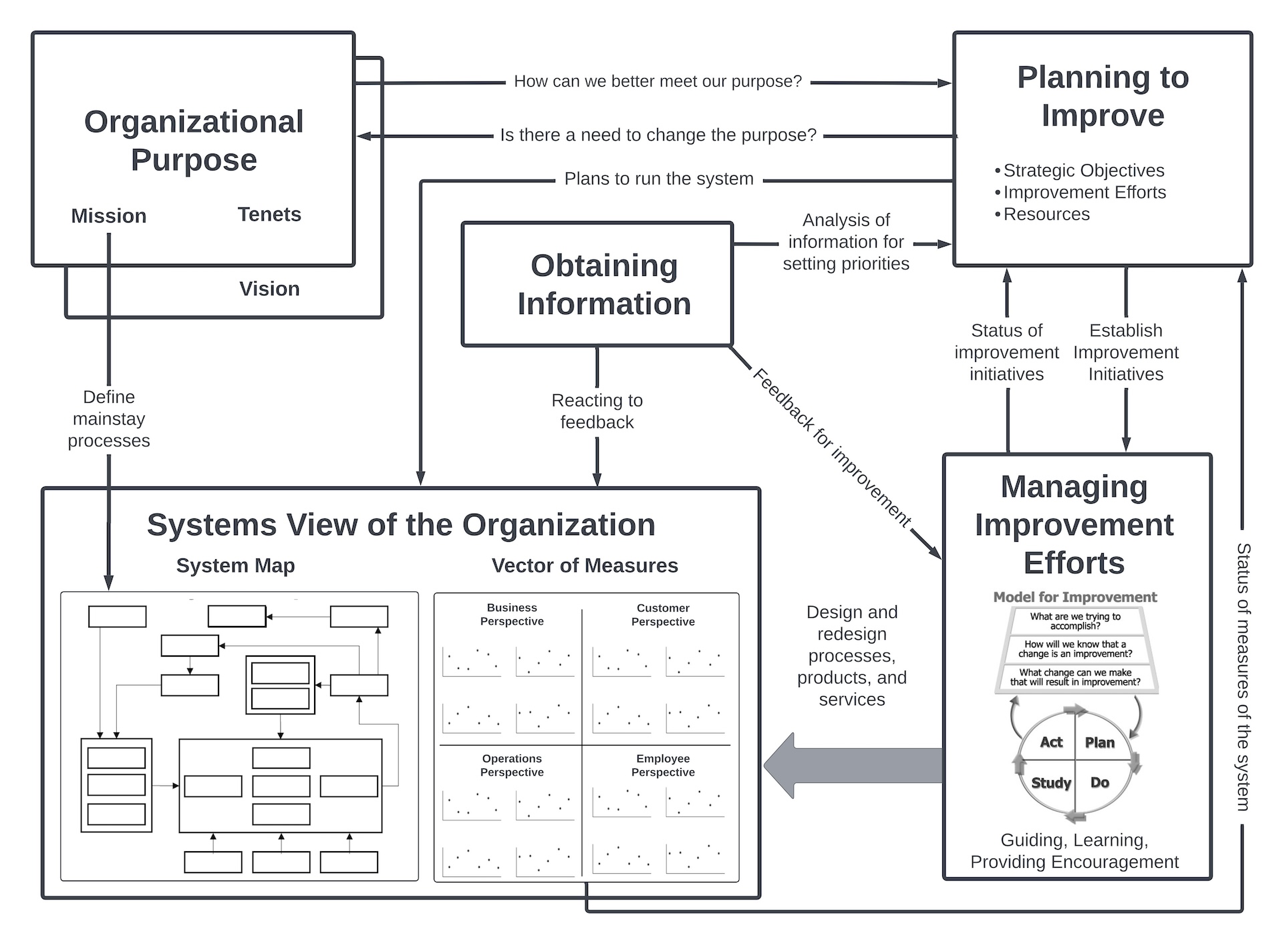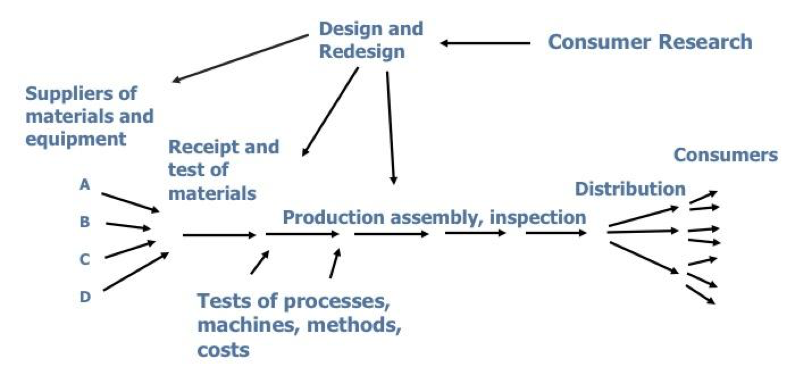In healthcare and education improvement, improvers have experienced the benefits of applying improvement science and related tools and methods to solve problems that matter. Now, leaders have started to think about how to do quality as a strategy for leading organizations. How do you lead for quality? What does that look like as a management system and philosophy? What are the key components?
In the opening pages of Out Of Crisis, Dr. Deming describes how he taught Japanese leaders the principles of quality control and reducing variation from Walter Shewhart’s work at Bell Labs. Dr. Deming references two key lessons that contributed to their quality “awakening” and became key parts of the quality management philosophy.
Starting in the summer of 1950, Dr. Deming began to include two concepts on the blackboard behind him: the chain reaction and a flow diagram of production viewed as a system.
The first is a concept called the “chain reaction,” and it goes like this:
Improve quality -> Costs decrease because of less rework, fewer mistakes, fewer delays, snags; better use of machine-time and materials -> Productivity Improves -> Capture the market with better quality and lower cost -> Stay in Business – > Provide jobs and more jobs
Put simply, if we improve quality, we will reduce waste and cost and be able to do the right work well, which helps us meet customer needs and grow, all while creating jobs.
The second concept was production viewed as a system. Here is the figure from Out of Crisis.
Dr. Deming describes that the primary job of management is designing and operating this system to meet the customer’s needs. Improvement tools and methods aid leaders and workers in creating reliable processes to meet the customer’s needs the first time. This becomes helpful when leaders want to pursue quality as a strategy and management philosophy.
The Associates in Process Improvement worked with Dr. Deming and have contributed to the science of improvement by helping transform his theories into practice. One lesser-known example is this translation of the production viewed as a system into Quality as an Organizational Strategy (QOS) (formerly Quality as a Business Strategy).

Quality as an Organizational Strategy (QOS)
QOS includes five activities for leaders:
- Purpose, mission, vision, and values
- Organization viewed as a system supported by a balanced family of key measures
- Customer focus and having a system to obtain information
- Planning process for operating and improvement
- An approach to managing improvement
Leaders who understand the chain reaction and pursue QOS experience the transformation Dr. Deming described happening to his Japanese colleagues. The management philosophy pivots to constancy of purpose, customer-centric, deep learning, rigorous problem solving, operating as a system of linked and interdependent processes, and a relentless desire to continually improve. The result is pride in doing the right work well.
Want to explore each of the activities up close? Check out these new posts: Activity 1 – Purpose, Activity 2 – Org Viewed as a System, Activity 3 – Obtaining Information, Activity 4 – Planning, and Activity 5 – Managing Improvement.
COMING in 2024: Quality as an Organizational Strategy: Building a System of Improvement from Lloyd Provost, Cliff Norman, and Dave WIlliams
—
If this was helpful, share and include me @DaveWilliamsATX. Sign up here to receive a monthly email from me that includes all my blog posts and other Improvement Science resources I think you’d appreciate.


